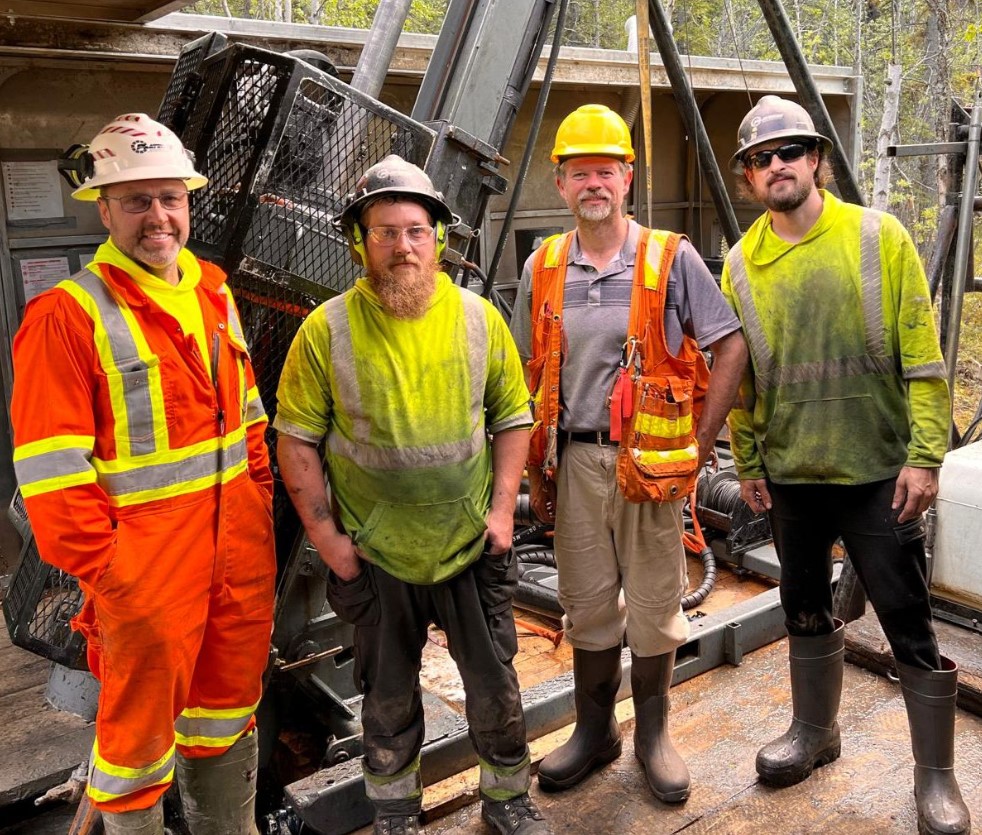GT Resources drills 20 metres of 2.12% nickel at Canalask Nickel-Copper Project, Yukon

GT Resources Inc. [TSXV: GT; OTCQB: CGTRF; FSE: 7N1] reported initial diamond drill assay results from the 2024 exploration campaign at the Canalask Nickel-Copper Project, Yukon, Canada.
A total of five holes were drilled, totalling 1,010 metres. Drilling intersected 2.12% nickel, 0.03% copper, 0.03% cobalt 0.19 g/t gold, and 0.37 g/t palladium was intersected over 19.9 metres (Hole CSK-24-02) in the Footwall Zone, including 4.45% Ni, 0.05% Cu, 0.06% Co, 0.37 g/t Au, and 1.44 g/t Pd over 1.3 metres.
The intercept began close to surface, at 17.6 meters down hole. CSK-24-02 targeted the high-grade Footwall Zone.
The property size was increased to capture the potential down dip extension of known mineralization. Eleven new claims were staked, totalling approximately 200 hectares.
Derrick Weyrauch, President and CEO, commented, “Drill hole CSK-24-02 returned a broad interval of 2.12% nickel which far exceeds the Historic Footwall Resource Estimate grade of 1.3% and shows the presence of significant gold and palladium mineralization. Historically, precious metals were not systematically analyzed for, thus scope exists for precious metals discovery.
“Our drilling represents the first drill testing of the Footwall Zone since the 1990’s and suggests the Footwall Zone comprises a combination of physically and hydrothermally remobilized nickel sulphide. The presence of footwall hosted nickel sulphide also suggests that a larger accumulation of nickel-sulphide ought to occur within the immediately adjacent Kluane Ultramafic Feeder Dyke.
“Drilling the ultramafic rocks within the Feeder Dyke encountered challenging ground conditions and these conditions demand different drilling techniques in the next drill campaign. As a consequence of ground conditions and associated difficulty in finding appropriate mud mixtures, holes targeting the favourable gabbro unit at the base of the ultramafic dyke did not reach their targeted depth.
“The gabbro hosted mineralization, returned 0.8% Ni and 0.2% Cu over 3 metres in historic hole VQ-7 and is the primary massive-sulphide target at Canalask.”
A Historical Resource Estimate on the Main Zone is quoted at 400,000 tonnes at 1.35% nickel (copper was not reported) by Discovery Mines Ltd. in 1968 (Yukon Assessment Report 094599).
This summer’s program represented the company’s first drilling campaign on the Canalask project. In addition to drilling the company conducted down-hole surveys and is currently reviewing the Borehole Electromagnetic (BHEM) data.
A total of five holes were drilled totaling 1,010 metres. Two holes targeted the historic high-grade Footwall style mineralization while three holes were planned to pierce the Electromagnetic (EM) conductor and the favourable gabbro at the base of the Ultramafic Feeder Dyke.
While drilling proceeded smoothly on the Footwall Zone holes, challenging overburden and blocky faulted ground was encountered within the ultramafic Feeder Dyke. As such only one of the three holes tested the shallow EM conductor, which now appears to be the result of thin pyrrhotite coated fractures in brittle fault zones.
None of the three holes targeting the massive sulphide potential of the gabbro unit at the base of the Feeder Dyke achieved planned depth. Within this gabbro unit at the base of the Feeder Dyke, historic hole VQ-07 returned 0.8% Ni and 0.2% Cu over 3 metres.
The Footwall Style mineralization consisted of massive veins, pods and disseminations of pyrrhotite-pentlandite hosted within intermediate volcanic rocks. This style of mineralization bears hallmarks of both physical and hydrothermal remobilization of nickel-sulphide and segregation of nickel-rich and copper-rich sulphide zones.
The presence of such significant footwall mineralization suggests an undiscovered source of nickel-copper sulphide could exist within the ultramafic Feeder Dyke. To try and trace a physical connection between the Footwall Style mineralization and the prospective basal gabbro unit, future drilling will target the ultramafic dyke footwall contact near the historic high-grade Footwall Zone.
The “White River Intrusive Complex” (WRIC) is a favourable setting for magmatic nickel-copper sulphide mineralization and is considered a “feeder system” with a high volume of magma flow. Due to the abundance of magmatic Ni-Cu-PGE showings at the base of the WRIC and the discovery of the nickel-rich Canalask footwall deposit, the project hosts strong potential for both “magmatic feeder-type” basal deposits and “epigenetic footwall-type” footwall deposits. The geological setting draws comparison to the world-class Norilsk Ni-Cu-PGE camp.
GT Resources is advancing district scale deposits in Canada and Finland. The Läntinen Koillismaa (LK) Project in north-central Finland, is a PGE-copper-nickel project that has existing NI 43-101 Mineral Resources, while North Rock, Tyko and Canalask are high-grade nickel-copper projects located in Ontario and the Yukon, Canada, respectively. Company strategy includes delivering Net-Zero Greenhouse Gas emissions considering the full life cycle of exploration, development, mining activities and that of the metals it strives to produce.
